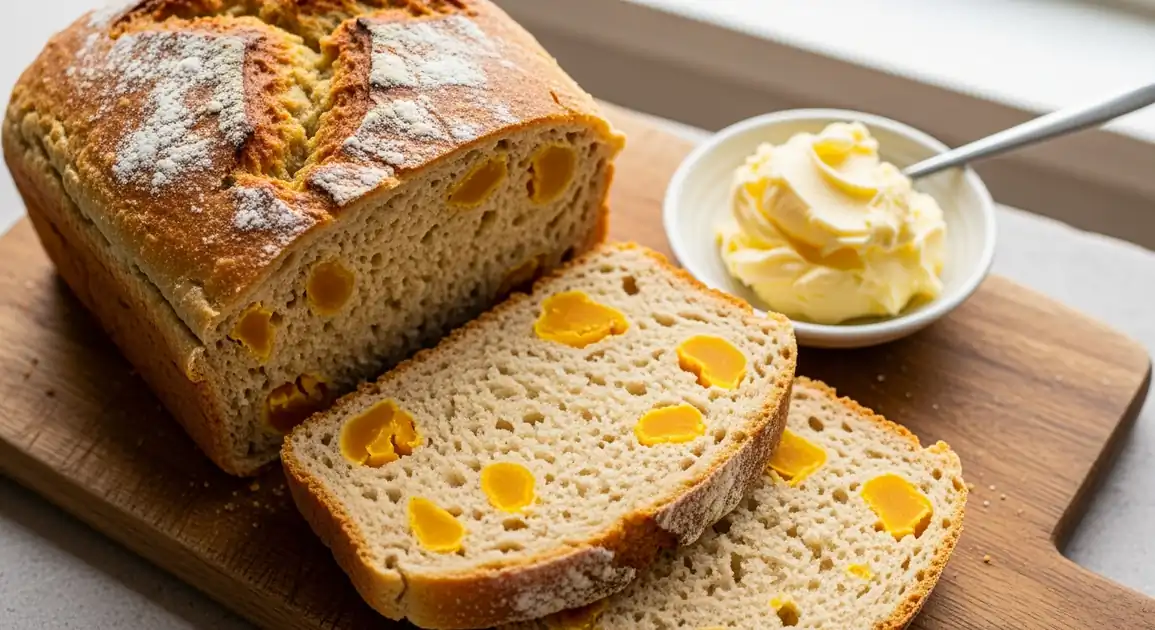Kumara Bread
Kumara Bread

Description
Throughout New Zealand, kumara bread represents a cherished example of how local ingredients have been incorporated into everyday cuisine. Made with New Zealand-grown kumara (sweet potato), this bread varies subtly by region, with North Island versions sometimes showing Māori influences, while South Island variations might incorporate additional local ingredients.
Dietary Information
Serving information
Serving style
Usually sold as whole loaves or half loaves, often unsliced to maintain freshness. In cafes, it's commonly served toasted with butter or as part of breakfast and lunch dishes.
Quick facts
Bakeries typically sell kumara bread from opening (usually 7 AM - 8 AM) until sold out. Farmers' markets operate primarily on weekend mornings from 8 AM - 1 PM.
Safety Tips
What to Look For
-
Visible pieces of kumara throughout the bread
Authentic kumara bread should contain noticeable pieces or flecks of sweet potato, indicating real kumara rather than just flavoring or minimal amounts.
-
Bread baked fresh daily
Ask when the bread was baked - freshness affects both taste and food safety. Ideally, purchase bread baked within 24 hours.
-
Proper storage conditions
Bread should be stored in clean, dry conditions, preferably in breathable containers or wrapped appropriately, not left uncovered.
-
Clean, well-maintained premises
Bakeries, markets stalls, or cafes selling kumara bread should demonstrate good overall hygiene practices.
-
Natural coloring
The orange or purple hue should come from real kumara, not artificial coloring. The color should look natural, not overly vivid or unnaturally bright.
What to avoid
-
Moldy or stale bread
Avoid bread with any signs of mold, unusual spots, or that feels excessively dry or hard.
-
Overwhelmingly sweet taste
While kumara bread has natural sweetness, an overly sweet flavor might indicate excessive added sugar rather than reliance on the kumara's natural flavor.
-
Gummy or undercooked texture
The bread should be fully baked with a moist but not gummy interior. Undercooked bread poses food safety risks.
-
Unnaturally bright orange color
Extremely vivid orange may indicate artificial coloring rather than natural kumara content.
-
Strong off-odors or fermented smell
While sourdough varieties have a pleasant tang, any strong, unpleasant odors may indicate spoilage.
Price information
Price range
Budget tips
- Farmers' markets often offer better value than upscale bakeries, with loaves typically priced at NZD 6-8.
- Buy direct from small, local bakeries rather than supermarkets for better quality-to-price ratio.
- Half loaves are sometimes available at artisan bakeries, allowing you to try the bread at a lower cost.
- Day-old bread is sometimes discounted at bakeries and still makes excellent toast.
Value indicators
- Weight - quality kumara bread should feel substantial for its size.
- Visible kumara pieces throughout the bread.
- Handcrafted appearance rather than uniform, mass-produced look.
- Information about the baker and ingredients suggests higher quality.
- Freshly baked the same day.
Where to Find This Dish
Artisanal Bakery Districts
Neighborhoods with concentrations of craft bakeries frequently offer kumara bread.
Local bakeries, Specialty food shops
Morning (8 AM - 11 AM)
Farmers' Markets
Weekend markets across the country feature small-batch bakers selling fresh kumara bread.
Market pavilions, Community centers
Saturday/Sunday Morning (8 AM - 12 PM)
Health Food Precincts
Areas with health food stores and organic shops often stock quality kumara bread.
Organic grocers, Health food stores
Midday (10 AM - 2 PM)
Vendor Tips
- Ask when the bread was baked for optimal freshness.
- Look for bakeries that use locally grown kumara.
- Some artisanal bakers only make kumara bread on specific days of the week.
How to Order
Regional Variations
-
Traditional Kumara Loaf
(Traditional Kumara Loaf)
The classic version featuring mashed orange kumara in a wheat-based dough, often slightly sweetened with honey or sugar.
-
Kumara Sourdough
(Kumara Sourdough)
An artisanal take that incorporates kumara into a naturally leavened sourdough base, creating a more complex flavor profile with a pleasant tang.
-
Seeded Kumara Bread
(Seeded Kumara Bread)
Kumara bread enhanced with various seeds (pumpkin, sunflower, sesame, flax) for added texture, nutrition, and flavor complexity.
-
Kumara Walnut Bread
(Kumara Walnut Bread)
A heartier version featuring chopped walnuts that complement the sweet earthiness of the kumara with buttery crunch.
-
Purple Kumara Bread
(Purple Kumara Bread)
Made with purple kumara varieties, resulting in a distinctive purplish hue and slightly different flavor profile than the orange kumara version.
-
Kumara Rēwena Fusion
(Kumara Rēwena)
A fusion bread combining kumara with traditional Māori rēwena (potato bread) techniques, often using a fermented potato starter.
-
Gluten-Free Kumara Bread
(Gluten-Free Kumara Bread)
Adapted versions using alternative flours like rice, tapioca, or commercial gluten-free blends to accommodate those with gluten sensitivities.
Cultural context
History
Kumara bread emerged from the intersection of European bread-making techniques and the use of kumara (sweet potato), a staple crop in traditional Māori cuisine. Kumara has been cultivated in New Zealand since its introduction by early Polynesian settlers around 1200 CE. The modern version of kumara bread gained popularity during the farm-to-table and artisanal baking movements of the early 2000s, as bakers sought to incorporate local, indigenous ingredients into their creations. Some versions draw inspiration from traditional Māori rēwena bread (a potato-based sourdough), creating a unique bread that honors both New Zealand's indigenous heritage and its European baking influences.
Local significance
Kumara bread represents New Zealand's unique food identity, incorporating the indigenous kumara into European-style baking. It symbolizes the blending of Māori and European culinary traditions.
Eating customs
- Commonly enjoyed toasted with butter for breakfast.
- Served alongside soups and stews, particularly in winter.
- Used as a base for open-faced sandwiches in cafes.
- Sometimes served as part of a bread basket at restaurants highlighting local cuisine.